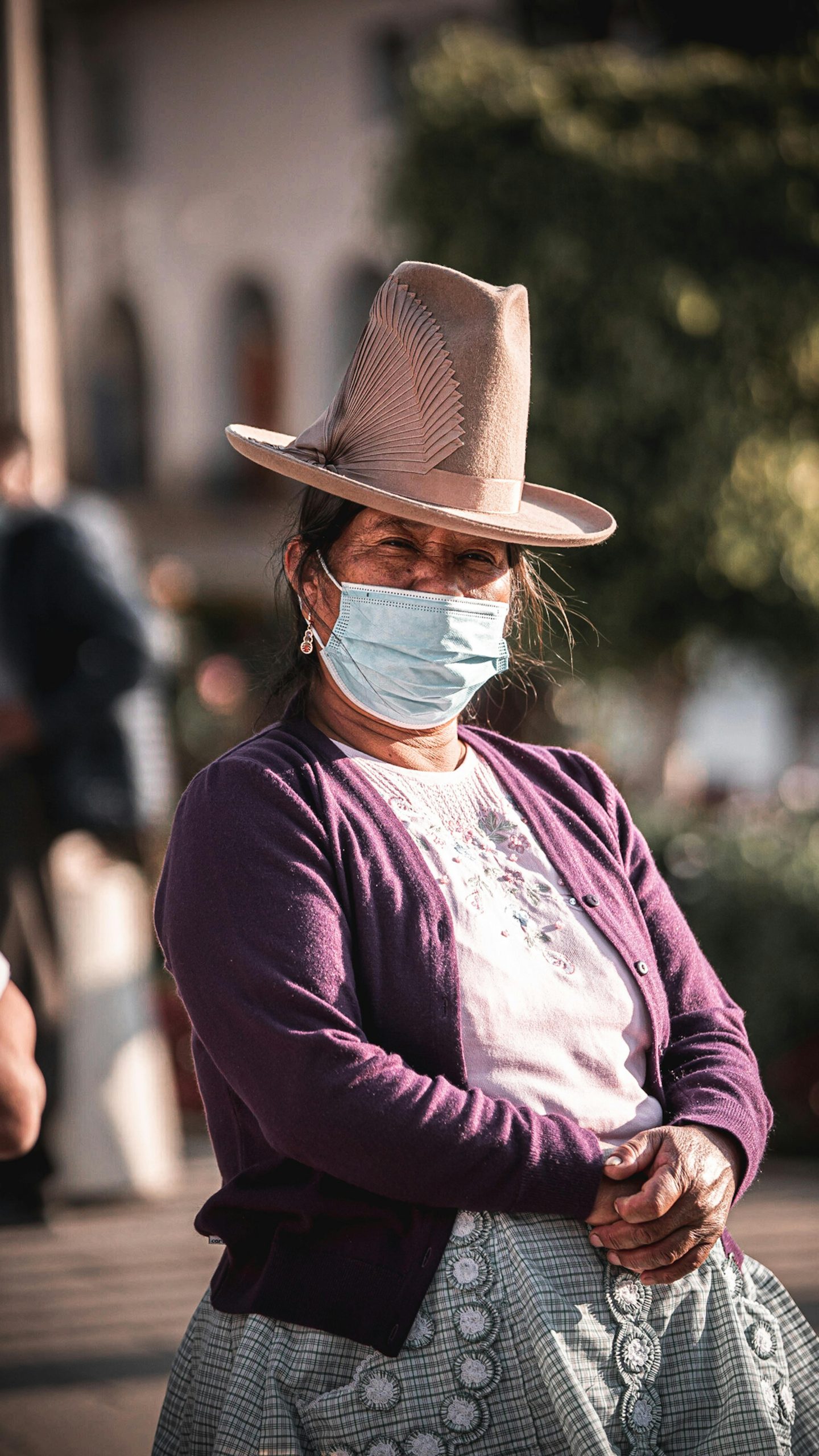How Peru Is Using Tech to Protect Its Cultural Heritage
You know what absolutely fascinates me? I’ve been following Peru’s digital heritage initiatives for the past couple of years, and honestly, what they’re accomplishing is pretty remarkable. While most of us are busy arguing about whether AI will take over the world, Peru is quietly using cutting-edge technology to safeguard thousands of years of cultural treasures. And trust me, after diving deep into this topic, I’m convinced they’re setting the gold standard for digital preservation.
Here’s the thing that really gets me excited about this story—Peru isn’t just digitizing artifacts and calling it a day. They’re creating immersive experiences that actually help people connect with their heritage in ways that weren’t possible before. We’re talking about virtual reality experiences of Machu Picchu, AI-powered archaeological discoveries, and blockchain systems protecting indigenous knowledge. It’s like watching the future of cultural preservation unfold in real time.
What struck me most when I first learned about Peru’s approach is how they’re balancing respect for indigenous communities with technological innovation. This isn’t some top-down government initiative—it’s a collaborative effort involving local communities, international tech companies, and academic institutions. The results? Well, they’re pretty mind-blowing, if I’m being honest.
Peru Heritage by the Numbers
Peru is home to 12 UNESCO World Heritage Sites, over 30,000 archaeological sites, and more than 3,000 museums. The country’s Ministry of Culture oversees the protection of approximately 100,000 cultural assets, making it one of the most heritage-rich nations in the Americas. Recent technological initiatives have digitized over 15,000 artifacts and created virtual access to sites that receive more than 4 million visitors annually.
Revolutionary Digital Preservation Techniques
Let me tell you about something that completely changed how I think about preservation technology. Peru’s National Institute of Research and Extension in Archaeology has been using photogrammetry and 3D scanning in ways that are absolutely revolutionary. I mean, we’re talking about creating digital twins of ancient structures that are accurate down to the millimeter level.
According to recent reports from Peru’s Ministry of Culture, their digital preservation program has documented over 15,000 artifacts using advanced imaging techniques since 2020. But here’s what really impresses me—they’re not just creating static 3D models. These digital replicas can show how structures looked centuries ago, predict future deterioration, and even simulate the effects of natural disasters.
Game-Changing Technology in Action
Peru’s use of LiDAR (Light Detection and Ranging) technology has uncovered previously unknown archaeological sites hidden beneath dense Amazon rainforest canopy. In 2023 alone, this technology helped identify 47 new potential archaeological locations, some dating back over 1,000 years.
What’s particularly fascinating—and something I didn’t fully appreciate until recently—is how Peru is using multispectral imaging to reveal hidden details in ancient textiles and artwork. This technology can see beneath layers of dirt and restoration work to show original colors and patterns that have been invisible for centuries. Honestly, it’s like having x-ray vision for cultural artifacts.
“Technology allows us to preserve not just the physical object, but the stories, the techniques, and the cultural context that make these artifacts truly meaningful to our communities.” – Dr. Luis Jaime Castillo, Former Vice Minister of Cultural Heritage
The digital preservation efforts extend beyond individual artifacts too. Peru’s comprehensive approach includes environmental monitoring systems that track temperature, humidity, and air quality in real-time across multiple heritage sites. These systems use IoT sensors and machine learning algorithms to predict when conditions might threaten preservation—pretty clever stuff, really.
AI-Powered Archaeological Breakthroughs
Now here’s where things get really interesting, and I have to admit, this part absolutely blew my mind when I first learned about it. Peru is using artificial intelligence to analyze satellite imagery and identify potential archaeological sites that human researchers might miss. We’re talking about algorithms that can spot subtle patterns in vegetation growth, soil composition, and topographical features that indicate buried structures.
The results speak for themselves. According to research published by the Pontifical Catholic University of Peru, AI-assisted site detection has increased the discovery rate of new archaeological locations by approximately 300% compared to traditional survey methods. That’s not just impressive—that’s revolutionary for the field of archaeology.
- Machine learning algorithms analyze decades of satellite imagery to identify anomalies
- Pattern recognition software detects subtle changes in landscape that indicate human activity
- Predictive modeling helps prioritize excavation sites based on historical and environmental factors
- Neural networks process ground-penetrating radar data to create detailed subsurface maps
But wait, there’s more—and this is where my tech background really gets excited. Peru is also using AI to reconstruct damaged artifacts and architectural elements. By training algorithms on thousands of examples of Inca stonework, Moche pottery, and Nazca textiles, researchers can now digitally restore missing pieces with remarkable accuracy.

Immersive Virtual Heritage Experiences
Okay, so this next part is where Peru really shows off—and honestly, it’s pretty spectacular. They’ve created virtual reality experiences that let people explore Machu Picchu, walk through ancient temples, and even participate in traditional ceremonies, all from anywhere in the world. I tried one of these VR experiences last year, and I’m not exaggerating when I say it gave me chills.
The technology behind these experiences is sophisticated stuff. Peru partnered with companies like Google Arts & Culture and local tech startups to create 360-degree immersive environments using high-resolution photography, drone footage, and 3D modeling. According to tourism statistics from Peru’s Ministry of Foreign Trade and Tourism, these virtual experiences have reached over 2.5 million people globally since their launch in 2022.
| Virtual Experience | Technology Used | Launch Year | Global Reach |
|---|---|---|---|
| Machu Picchu 360 | VR, Drone Photography | 2021 | 1.2M users |
| Sacred Valley Journey | AR, 3D Modeling | 2022 | 800K users |
| Nazca Lines Explorer | Satellite Imagery, AI | 2023 | 500K users |
What really impresses me about Peru’s approach is how they’re using augmented reality to enhance physical visits too. Visitors to archaeological sites can now use smartphone apps to see reconstructions of ancient buildings, view historical information overlaid on ruins, and even watch virtual recreations of ancient ceremonies right where they originally took place.
“We’re not replacing the physical experience of visiting our heritage sites—we’re enriching it. Technology helps visitors understand the full story of what they’re seeing.” – Maria Elena Córdova, Director of Digital Innovation, Peru Ministry of Culture
Blockchain Technology for Cultural Protection
Now this is where Peru is really pushing boundaries, and I have to say, it’s pretty forward-thinking stuff. They’re using blockchain technology to create immutable records of cultural artifacts and protect indigenous intellectual property. Essentially, they’re creating digital certificates of authenticity that can’t be forged or altered.
The system works by creating detailed digital records of each artifact, including its provenance, historical significance, and current condition. These records are then stored on a distributed blockchain network, making it nearly impossible for artifacts to be sold illegally or for their histories to be falsified. According to UNESCO reports, this technology could revolutionize how we combat the illegal trafficking of cultural artifacts globally.
- Digital documentation creates comprehensive artifact profiles
- Blockchain storage ensures record permanence and authenticity
- Smart contracts automate ownership and lending agreements
- International databases facilitate recovery of stolen artifacts
But here’s what really excites me about this initiative—Peru is also using blockchain to protect indigenous knowledge and traditional practices. Communities can now register their traditional designs, stories, and cultural practices on the blockchain, creating legal protection against unauthorized commercial use.
Community-Driven Heritage Projects
What I find most inspiring about Peru’s approach—and this really drives home why their model is so successful—is how they’re putting local communities at the center of these technological initiatives. This isn’t some colonial-style preservation effort where outsiders decide what’s important. Indigenous communities are leading many of these projects, using technology to preserve and share their own cultural heritage on their own terms.
The community engagement aspect is remarkable. According to research from the Inter-American Development Bank, over 200 indigenous communities across Peru are now actively participating in digital heritage preservation projects. These communities are using smartphones and tablets to document traditional practices, record oral histories, and create digital archives of their cultural knowledge.
Community Success Story
The Shipibo-Konibo community in the Amazon has created a comprehensive digital archive of their traditional textile patterns, with each design’s meaning and creation process documented through video tutorials and interactive exhibits. This project has not only preserved their cultural knowledge but also created new economic opportunities through online sales and cultural tourism.
I recently learned about a particularly innovative project where communities are using mobile apps to report threats to heritage sites. When illegal logging, mining, or construction threatens archaeological sites, local residents can instantly alert authorities with GPS coordinates and photographic evidence. It’s like crowdsourced heritage protection, and it’s working incredibly well.
“Technology gives us new ways to share our stories with the world while maintaining control over how our culture is represented. It’s empowering in a way that traditional preservation methods never were.” – Carlos Reynel, Shipibo-Konibo Community Leader
Global Impact and Future Possibilities
So what does all this mean for the broader world of cultural heritage preservation? Well, from where I sit, Peru is basically writing the playbook for how technology can serve cultural preservation in the 21st century. Other countries are already starting to adopt similar approaches, and international organizations are taking notice.
The World Bank recently approved a $25 million loan to support Peru’s digital heritage initiatives, citing their potential for replication across Latin America. Similar programs are now being developed in Colombia, Ecuador, and Bolivia, with Peru serving as the technical advisor. Honestly, it’s pretty amazing to see how one country’s innovation can catalyze change across an entire region.
- UNESCO is developing global standards based on Peru’s blockchain authentication system
- The European Union is funding similar AI archaeology projects in Mediterranean countries
- Microsoft and Google have expanded their cultural preservation programs based on Peru’s model
- International museums are adopting Peru’s virtual reality exhibition techniques
Looking ahead, Peru is planning even more ambitious projects. They’re developing AI systems that can predict heritage site vulnerabilities to climate change, creating virtual reality experiences for rare and fragile artifacts that can’t be publicly displayed, and building international partnerships to share their technological expertise with other heritage-rich nations.
As I wrap up this exploration of Peru’s incredible work, I can’t help but feel optimistic about the future of cultural heritage preservation. Peru has shown us that technology doesn’t have to be a threat to traditional culture—when implemented thoughtfully and with community leadership, it can be one of our most powerful tools for keeping cultural heritage alive and accessible for future generations.
The lesson here isn’t just about technology, though. It’s about respect, collaboration, and recognizing that the best preservation efforts happen when communities have the power to tell their own stories. Peru gets this, and that’s why their approach is working so brilliantly.


